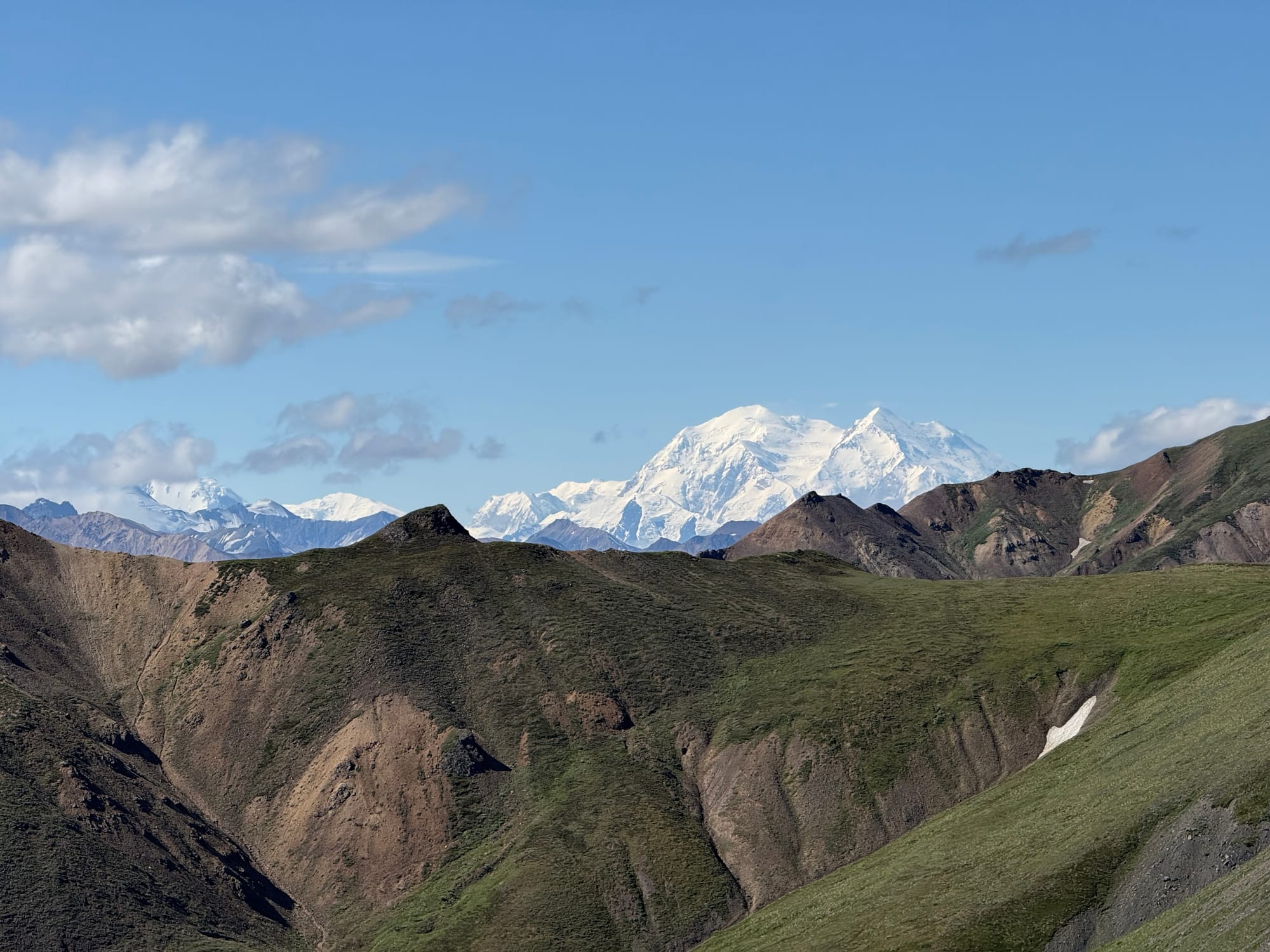On the Bus
At once sparse and endless, it feels like the forest must contain everything, but that the odds of bumping into anything at all, let alone a bus, are near zero.

It has long been suspected, in some circles, that I might one day wake up and go–I say this with respect–full McCandless. For the unfamiliar, this means I would can law school, drive around the country, torch my car, hitchhike to Alaska, try to survive sleeping in a bus in the bush, and ultimately not make it out. The joke's on them, because I can never fall asleep on the bus.
This risk got a lot of airtime the first time I went for a section along the AT. To this day, it remains a regular talking point whenever I go on a muckabout of nearly any sort, but in particular before this sojourn, to Alaska.
To be fair, I had quit my job. They were not without reason. The thing that is the eeriest is not the darkness between the boreal trees in the long twilight at midnight, nor is it the replica Into the Wild bus at the brewery, nor the people who died trying to pilgrimage to the original bus, but the way in which, controlling for death by plant misidentification, the guy's experience was so emblematic of the tourist struggle in Alaska.
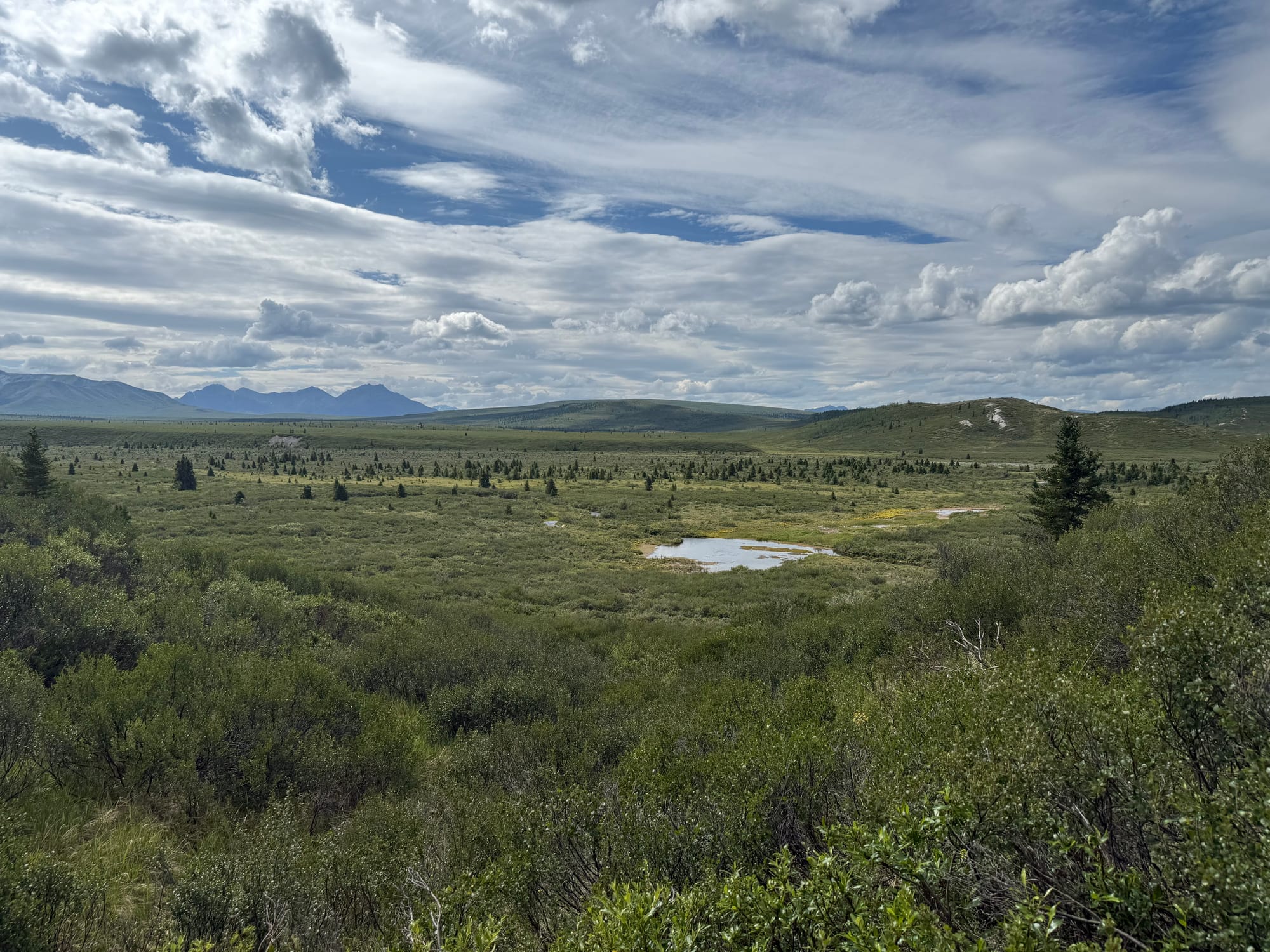
Sometime in first or second grade, we did a unit in which we "studied" Alaska. Namely, we learned that the flag is the Big Dipper and North Star, that the iditarod is something, that that bronze dog in Central Park was a real dog, and once the nation's foremost canine celebrity. We did not learn, as I did on this trip, that the Iditarod was not in fact conceived in dialogue with the 1925 serum run, nor that the said serum was for diptheria, as opposed to the flu. It's thus hard for me to conceptualize the US without its nice number of 50 states, without Alaska among them enhancing the size of the country a third over, standing up there in the inaccessible north as a second-to-last frontier.
There's a certain ruggedness we would be foregoing had we no connection to the arctic and to the three bears of Alaska. Of course, the place had been home to dozens of groups across different language families since, like, the landbridge, or the megafauna. But, it's still fairly sparse, and I didn't even go to the sparse part. It's a third the size of the lower 48, but with about as many people as live in DC. Even today, it's not that hard to imagine one could start over: change names, pay in cash, travel by river or bushplane.
It's good for people like me, too, to still have some place to go poke around. Somewhere that isn't just Brooklyn with dirt, or worse, a Disneyfied mountain town. Alaska is definitely someplace else. According to a tattered book I bought for $2.50 in Juneau, the Russians came over early enough that the citizens of what's now Sitka outnumbered those of San Francisco basically until the gold rush. Many of the churches around the coast remain Russian Orthodox, and the faith is big in the Aleutians. The Harding Ice Field looks like Antarctica, while the Great Kobuk Sand Dunes look like Namibia.
Meanwhile, the rangers at every park religiously refer to it as your national park, and they have the same drive-up coffee shacks as in Washington and Oregon. While foreign, it remains American enough that the Safeway in Juneau sells Atlantic salmon, shipped over from who knows where. At a bakery near Denali National Park, they sell two sizes of cinnamon buns, Alaskan and Texan. The tourists from Texas, I am told, are invariably upset to learn that theirs are the smaller. The bigness of Texas was something they all thought they knew for sure, until they saw the bigness of Alaska.
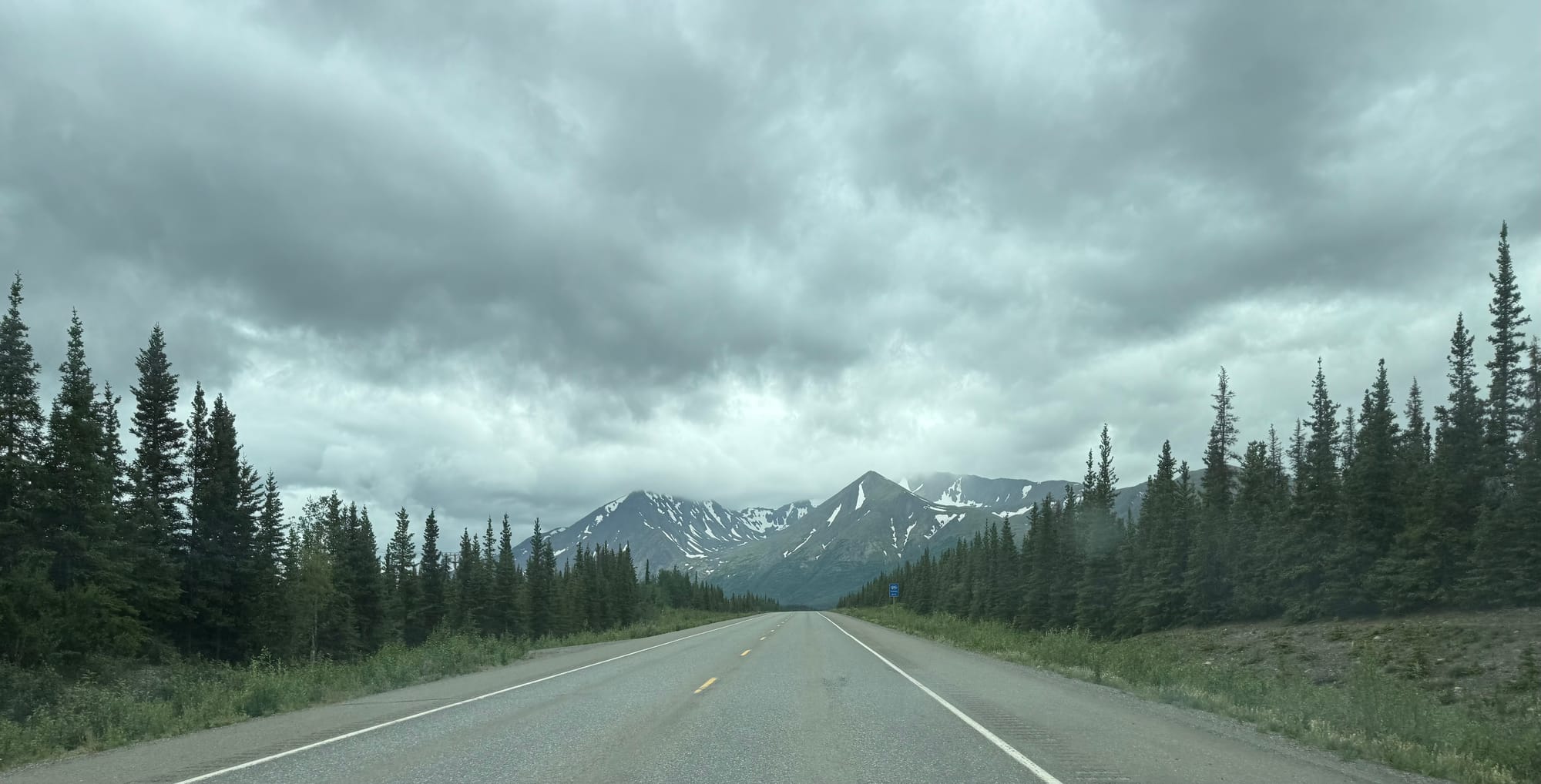
Driving up on a cloudy day, I felt that bigness as I passed the limit of the leafy birch and entered the Taiga, the boreal forest dominated by white spruce. They don't stand so close together, and they don't grow all that tall, but the bark beneath their branches darkens the whole scene, and they cast long shadows, stretching off indefinitely. At once sparse and endless, it feels like the forest must contain everything, but that the odds of bumping into anything at all, let alone a bus, are near zero. It felt unthinkable that somebody like Chris McCandless could see what I saw and think he could cut it with a rifle and a pair of boots.
Nowadays, though, if you want to go into the park past mile 15 or so, bus is the only way. The buses look not that diffferent from his bus. They're basically just dark green school buses – tan for the wildlife tour in which you're not allowed to get off – that are a little outdated but seem somewhat aesthetic in that way the parks service has a peculiar knack for. Visitors are told to treat the buses as their private vehicle by asking to stop wherever, ascending and descending at will. If a ranger sees you walking or biking along the road while a grizzly is too close, they'll make you go get on. But otherwise the instruction is to do your own thing and wave down a bus when you need to. In the backcountry, they told me, you're responsible for your own safety.
There are some special buses that wouldn't pick me up, I learned. One was operated by Princess Cruises and deposited passengers from their Princess Lodge at a few points in the park, where they board one of the tan or green ones, as appropriate. This is of course after having ridden a different bus a few hours north from wherever the cruise dropped off, understanding that those cruise ships are, in their way, just floating buses. These folks came here to see wild and not, as McCandless did, to be wild. Both of them woke up one day and were on the bus.
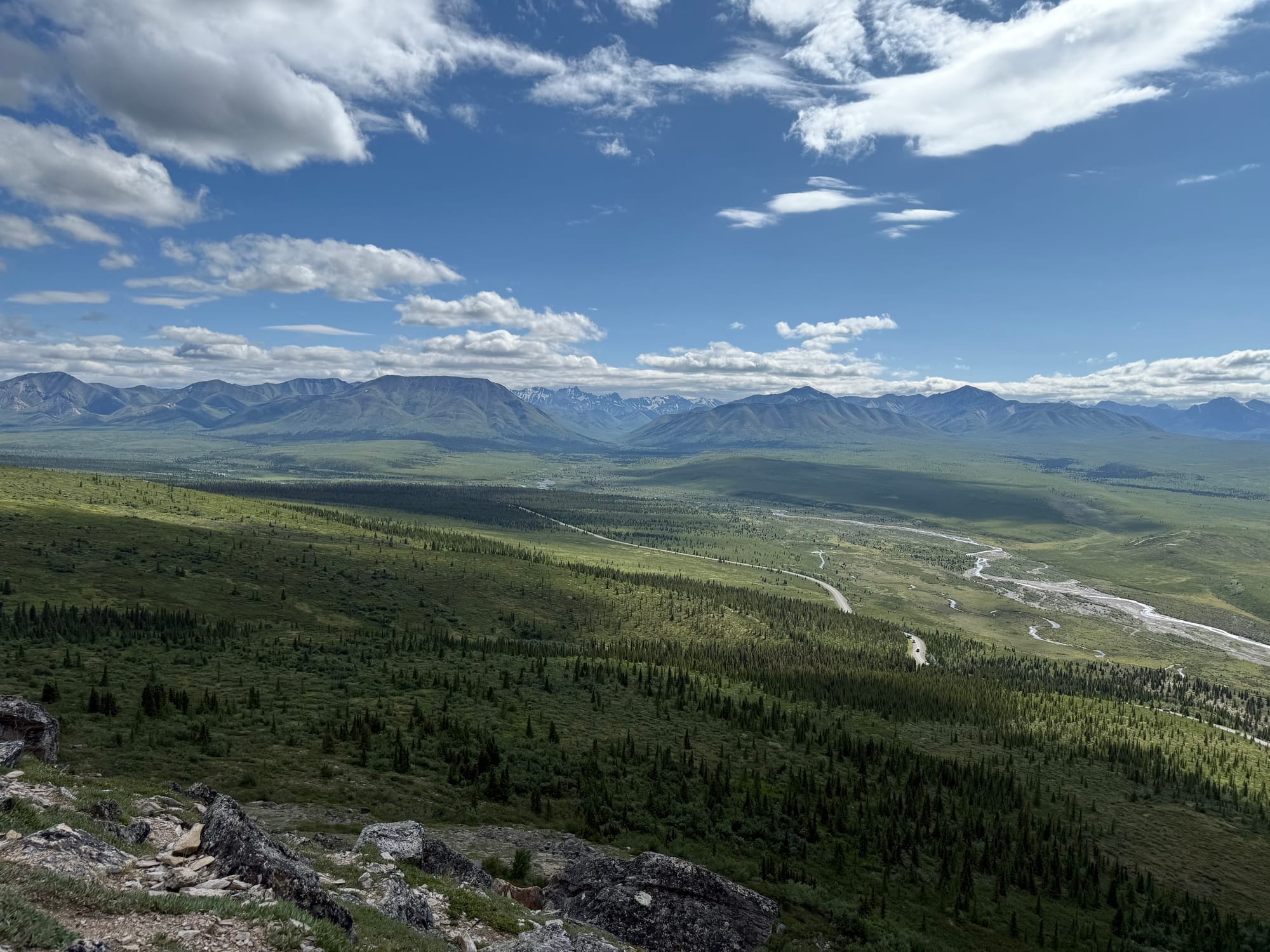
On the tan and green, public and private, the shared goal is to see it. To see a moose, to see a bear, to be among the alleged 30% of park visitors who actually see the full Denali itself. In a few days up at the park, I did all of these activities by bus. I watched and saw from the bus even if I would tell anybody who asked that I had come here to take my shoes off and sink my bare feet into the spongy tundra and to soak my boots in streams. I had come also to talk to some folks, but not too many. I had come to both see mountains and also climb one and to walk through gigantic landscapes like an ant. I had come to keep with my head on a swivel, certain there was a grizzly in the room with me, but astounded by the bigness of that room. I did all those things, but to do so, I had to take the bus.
I had been traveling alone, but when I found myself a hundred yards from a mother bear and two cubs, I melted with gratitude to see a few people nearby. The safest place to be with regard to bears is at home in North Carolina or Iowa or whatever, but the second-safest place is in a big group. I typically hike alone, in part because I like to do my own thing, but also because other people are busy and the activity itself is not always that fun.
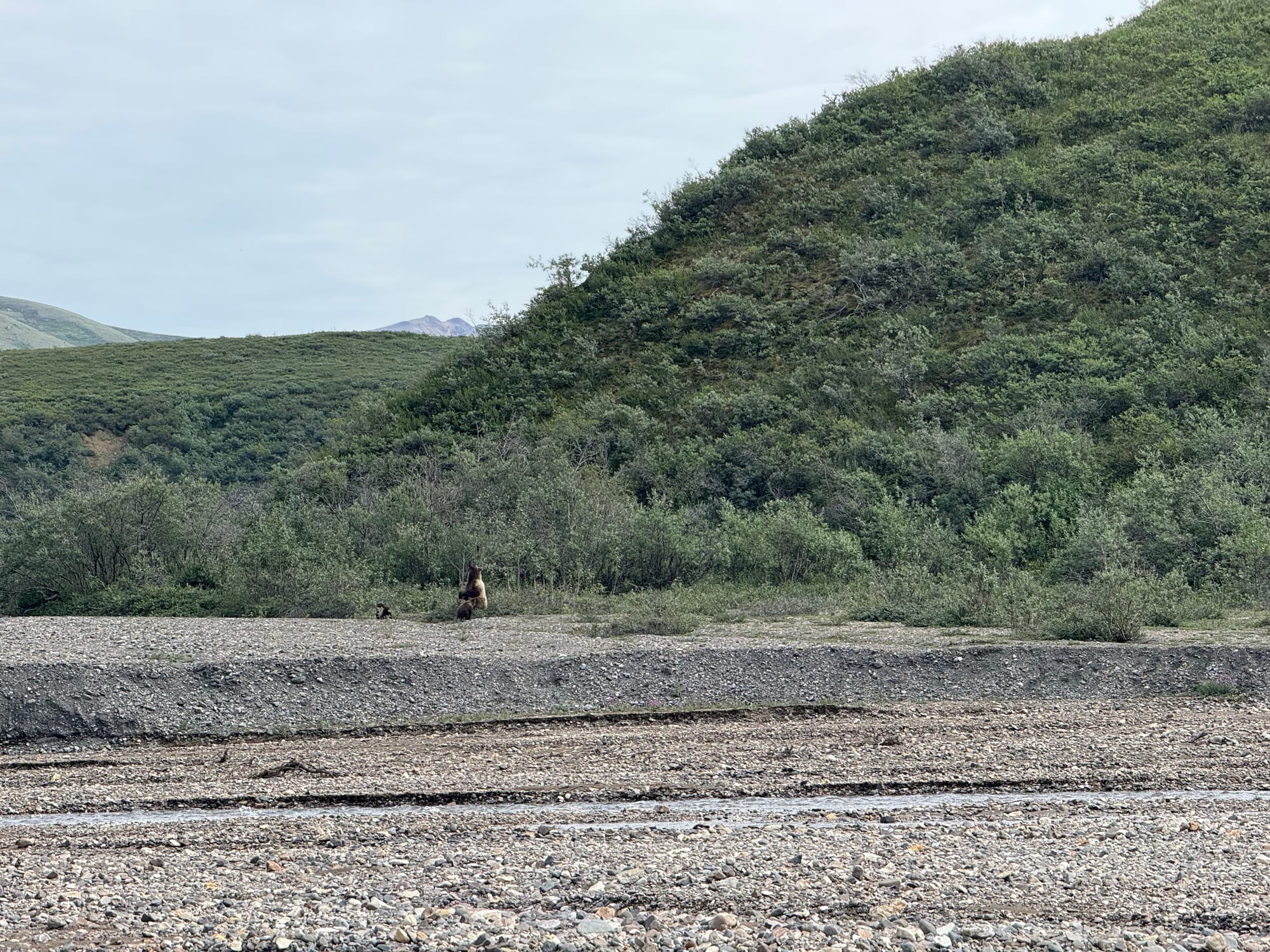
To be out there, though, on a gravel bed in a braided river, straddling a ridgeline with a talus slope on either side, or taking giant steps among tundra mosses or subarctic bogs, this was a wholly different discipline, a new level of solitude, compared to my usual trips along the AT. People call that "the people's trail" because it's so social, while here, "social trail" was a way to ruefully describe parts of the trail-free wilderness visitors had tracked out. Instead of following a trail, up to 12 backpackers per day can get a permit to camp in one of the park's 87 units, each of which is thousands of acres and could be 100 square miles. That's the kind of solitude and anonymity I imagine Chris McCandless sought.
But to access this solitude, to track down this type of aloneness requires a nontrival amount of risk. Injuries or bears or changing weather, it's all no joke. What's worse, though, is to get there, you have to take a bus. I kept a short leash to mitigate my chances of any kind of suicide by incompetence, but, like so many others, I came to Alaska to be wild and be alone, and I wound up on the bus.
